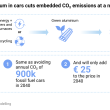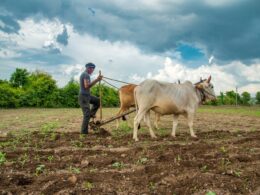Rio Tinto has signed a Joint Development Agreement (JDA) with Australian environmental technology firm Calix to support the development of a demonstration plant for Calix’s Zero Emissions Steel Technology (Zesty™). The planned facility, to be built in Kwinana, Western Australia, aims to test whether Pilbara iron ore can be used in lower-emissions steelmaking.
The Kwinana site was previously earmarked for Rio Tinto’s BioIron™ research and pilot plant. However, the company has concluded that BioIron’s current furnace design requires further development to reduce technical risks and improve performance. Research on the BioIron process continues in partnership with the University of Nottingham and sustainable technology company Metso.
Rio Tinto plans to provide more than A$35 million — a mix of financial and in-kind support — to progress Calix’s Zesty Green Iron Demonstration Plant, which is also backed by the Australian Renewable Energy Agency (ARENA). Calix has separately secured a A$44.9 million ARENA grant for the project, subject to final conditions.
The Zesty process uses electric heating and hydrogen to reduce iron ore, and is compatible with lower-grade materials. If approved, the demonstration plant will contribute to ongoing efforts to accelerate lower-emissions steel production.
Rio Tinto Iron Ore Chief Executive Matthew Holcz said: “The world needs low-emissions steel if it is going to decarbonise, and we continue to look at a range of ways Pilbara iron ores can help to do this as new technologies emerge. We’re pleased to partner with Calix… In parallel, we’ll keep progressing BioIron… Both projects are part of our work to reduce emissions and support the future of iron ore in Australia and the communities that depend on it.”
Western Australian Premier Roger Cook welcomed the agreement, describing local green-iron production as central to the state’s ambitions to strengthen clean-energy industries.
“Locally made green iron is a key part of my vision to become a renewable energy powerhouse and make more things here,” he said. The state government has recently adopted an “if not, why not” approach to green-steel procurement for major public projects.
The Kwinana site offers access to existing industrial infrastructure, ports and utilities. It is also close to the proposed NeoSmelt facility — a downstream processing project being developed by five partners including Rio Tinto, and which has secured its own ARENA funding.
Calix Chief Executive Phil Hodgson said the JDA marked “a major milestone in the commercialisation of Zesty,” noting that Rio Tinto’s involvement provides technical expertise and market reach. He added that the technology has the potential to support decarbonisation in a sector responsible for around 8% of global CO₂ emissions while strengthening Australia’s export position.
Under the JDA, Rio Tinto will support the Zesty project through technical assistance, engineering services and advocacy until it reaches a Final Investment Decision (FID). Subject to FID and successful construction, Rio Tinto will supply up to 10,000 tonnes of Pilbara iron ore for commissioning and early testing, and will help introduce the product to potential customers.
The agreement gives Rio Tinto a non-exclusive global licence to use the Zesty technology commercially, to sub-license it to affiliates and customers, and to act as a non-exclusive global marketing agent.





















